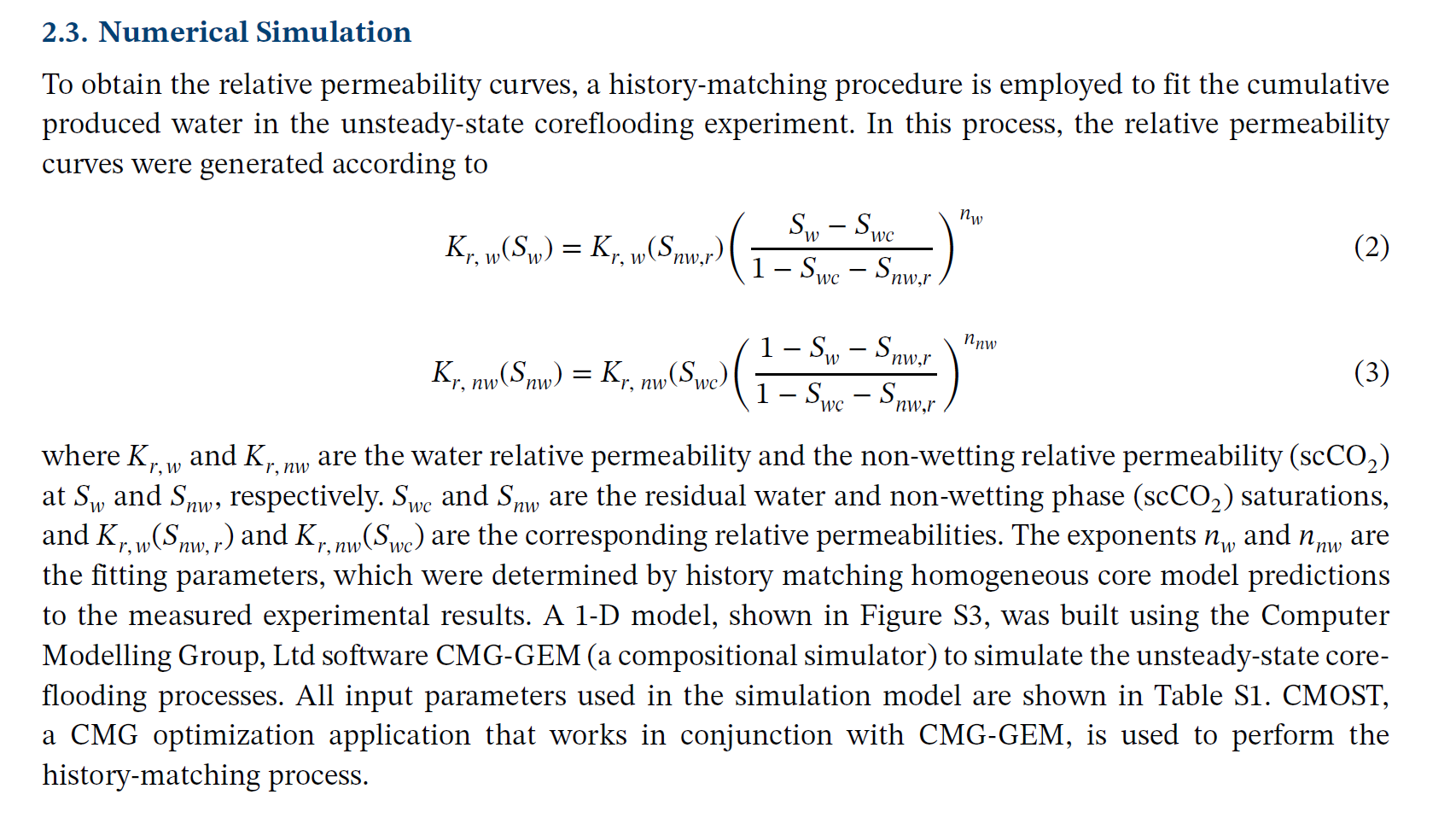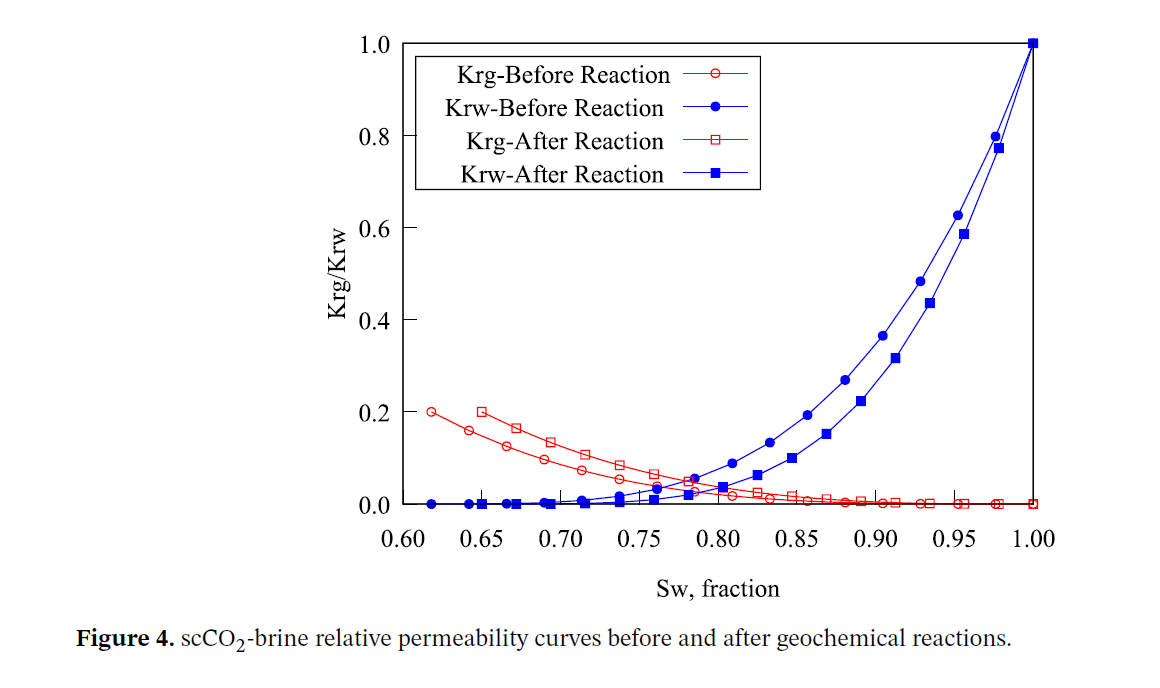Link Between CO2‐Induced Wettability and Pore Architecture Alteration
Abstract
Changes in pore (throat) size, surface roughness and mineralogy induced by supercritical-CO2-water-rock reactions impact petrophysical properties such as porosity, permeability, and especially wettability. Herein, we show that these changes directly impact relative permeability and capillary pressure curves, a fact rarely studied in the literature. In this work, we show that CO2 contact angle changes emerge after Madison Limestone samples were soaked for 400 hours in CO2-enriched brine. Coreflooding results show that the water production rate and cumulative water production increased after the rock was exposed to carbonic acid. Moreover, the mercury capillary pressure decreased in meso- and macro-pores, indicating the increase of size in these pores due to reactions. This compounded wettability and pore network alteration can directly affect CO2 injectivity, migration and storage capacity. Furthermore, this fundamental insight into CO2 geological storage processes should aid practitioners to reduce uncertainties in forecasting CO2 distribution via injection simulation.
Plain Language Summary
Emitting a large amount of greenhouse gases into the atmosphere has disrupted the global carbon cycle. CO2 captured from various sources could be transported to a close-by site for injection into deep saline aquifers or oil/gas reservoirs for storage or/and enhanced oil recovery.
Reactions between the rock and the carbonic acid can alter the rock fabric. These reactions can change rock properties, for example, pore structure, porosity, permeability, and wettability. These changes can affect capillary pressure and relative permeability. These rock alterations can significantly impact the fate of the injected CO2. Despite efforts made to determine changes in pore architecture or petrophysical properties, a few studies have investigated the impact of rock alteration on multiphase flow properties, namely, capillary pressure and relative permeability. Even less is understood on this subject when diffusion dominates over convective transport. Here we focused on changes in pore (throat) size distribution and wettability, and dynamic properties, as induced by geochemical reactions. We observed pore enlargement among the larger pores (mesopores to macropores) due to mineral dissolution, which contrasts with a decreased size in smaller pores (micropores), resulting from mineral precipitation. These processes lead to a more CO2 surface wetting and thereby capillary pressure and relative permeability.




